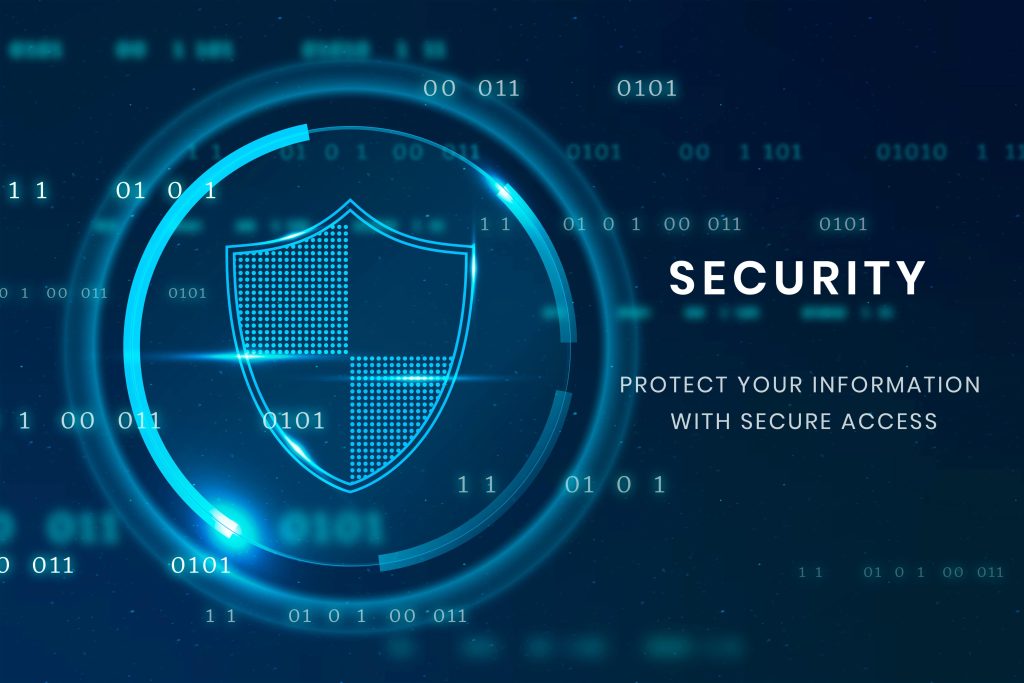The Internet is a powerful tool, and it’s no surprise that it has been used for malicious activities. Cyber security threats come in all shapes and sizes and can be extremely difficult to detect and combat. In this blog post, we’ll be going over the seven different types of cybersecurity threats and how they can be avoided. We’ll discuss the different types of cyber attacks, the standard methods used to carry them out, and what you can do to protect yourself and your organization. With the proper knowledge, you’ll be able to outsmart the bad guys and keep your data safe. So let’s jump in and learn about the seven types of cyber security threats.
Definition of Cyber Security
Cyber security, also known as information technology security, protects networks, systems, programs, and data from digital attacks. These cyber-attacks usually aim to access, change, or destroy sensitive information, extort money from users, or interrupt normal business processes. Cyber security involves implementing various security measures, such as firewalls, encryption, and authentication, to protect networks, systems, and data from unauthorized access and malicious attacks.
Overview of the Different Types of Cyber Security Threats
Cyber security threats refer to any malicious activity that has the potential to disrupt or damage computer networks, systems, or devices. Some of the most common cyber security threats include malware, phishing, ransomware, distributed denial of service (DDoS) attacks, data breaches, hacking, and insider threats.
Cyber security threats can lead to data loss, system outages, and financial losses. OrganisationsOrganisations must protect their systems and networks from cyber threats by implementing strong security measures such as user authentication, encryption, network firewalls, and intrusion detection systems.
Types of Cyber Security Threats

Cybersecurity threats are becoming increasingly prevalent in the digital world. These threats can take many forms, including malware, phishing, ransomware, botnets, and more. Here are the most common types of cyber security threats.
1. Malware
Malware is malicious software designed to damage, disrupt, steal, or gain unauthorized access to a computer system. Examples include viruses, worms, ransomware, spyware, and Trojan horses.
2. Phishing
Phishing is a cyber attack that uses social engineering to trick victims into revealing confidential information or installing malicious software. It typically involves spoofed emails, malicious links, and fraudulent websites.
3. Social Engineering
Social engineering is an attack that relies on manipulating people into revealing confidential information or granting access to restricted systems. Examples include impersonation, tailgating, and dumpster diving.
4. Distributed Denial of Service (DDoS)
A DDoS attack is a cyber attack that floods a network or server with traffic to disrupt its normal operations. DoS attacks are attempts to make a computer or network resource unavailable to its intended users by disrupting the services of a host connected to the Internet. DDoS attacks involve multiple connected systems (often referred to as a botnet) that are used to overwhelm a target system with malicious traffic.
5. Password Attacks
Password attacks are attempts to gain access to systems or networks by guessing or cracking passwords. Examples include brute-force attacks, dictionary attacks, and rainbow table attacks.
6. SQL Injection
SQL injection is a type of attack in which malicious code is inserted into a database query to gain access to sensitive or modify existing data.
7. Man-in-the-Middle (MITM) Attacks
MITM attacks are when an attacker intercepts communications between two parties to gain access to confidential information.
8. Zero-Day Attacks
Zero-day attacks exploit newly discovered vulnerabilities in software before the vendor has had time to develop a patch.
Impact of Cyber Security Threats
Cybersecurity threats have become increasingly prevalent in recent years, and their impact on businesses and individuals can be severe. Cyber security threats can lead to data loss, financial loss, reputational damage, and increased legal and regulatory scrutiny. They can also disrupt operations and put customers, employees, and partners at risk.
As such, organizations must take proactive steps to protect themselves from these threats. This includes implementing technical security measures, such as firewalls, antivirus software, and two-factor authentication, and developing policies and procedures to ensure proper data handling and security.
Additionally, organizations should invest in staff training to ensure that employees are aware of the risks and can recognize suspicious activity. By taking these steps, organizations can reduce the likelihood of a successful attack and limit the damage caused by cyber security threats.
Best Ways to Protect Your Business from Cyber Security Threats

Cybersecurity threats are becoming increasingly common and more severe with each passing day. It is essential to take the necessary steps to protect your systems and data from these threats. Here are some ways to protect from cyber security threats.
1. Use Strong Passwords
Use secure passwords that include upper and lower case letters, numbers, and special characters. Avoid using words that can be guessed easily. Change your passwords regularly.
2. Install Firewall and Antivirus Software
Install antivirus software and a firewall to protect your computer from malicious attacks. Ensure that your software is up-to-date, and regularly scan your computer for potential threats.
3. Update Software
Regularly update your software and operating system to ensure you use the latest security features.
4. Use Secure Networks
Connect to secure networks using public Wi-Fi hotspots. Avoid using unsecured networks and a virtual private network (VPN) for sensitive activities.
5. Backup Your Data
Regularly back up your data to ensure that you do not lose any critical information during a cyberattack.
6. Be Cautious of Phishing Emails
Be cautious of emails containing suspicious links or attachments, and never provide your personal information to unknown individuals or organizations.
7. Educate Yourself
Stay up-to-date on the latest cybersecurity threats and best practices by reading security blogs, attending webinars, and participating in online courses.
8. Install Antivirus Software
Install and regularly update antivirus software on all of your connected systems and devices.
9. Monitor Your Network
Regularly monitor your network using systems such as FastNetMon to identify suspicious activity in real-time before they can do any damage.
10. Restrict Access to Private Data
Limit access to private data only to those who need it to perform their job correctly.
11. Use a Virtual Private Network (VPN)
Use a VPN to encrypt your connection and protect your data when using public Wi-Fi hotspots.
Conclusion
In conclusion, cyber security threats are a growing concern for businesses, governments, and individuals. With the ever-evolving digital threats, it’s essential to be aware of the different cyber security threats to protect yourself and your data. Numerous threats can affect your data and digital systems, from phishing scams to ransomware and DDoS attacks. By understanding the different types of cyber security threats, you can better protect yourself and your business from these malicious actors.
































































